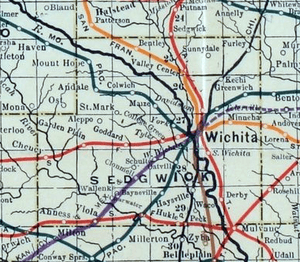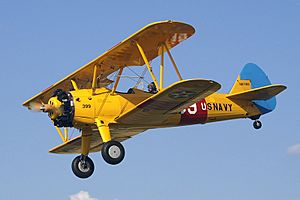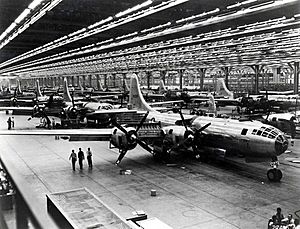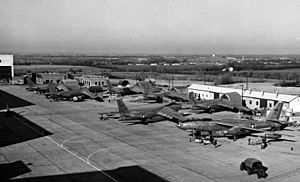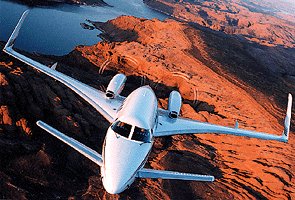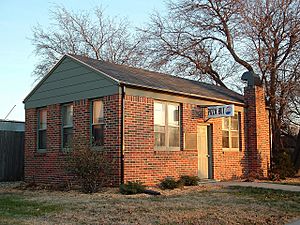History of Wichita, Kansas facts for kids
The history of Wichita tells the story of Wichita, Kansas from when people first settled there in the 1860s up to today.
Contents
Early Times and Explorers
The area where the Arkansas and Little Arkansas Rivers meet has been a busy trading and meeting spot for people who hunted and moved around for at least 11,000 years. Archeologists have found signs that people lived in the Wichita area as far back as 3,000 BC.
In 1541, Francisco Vázquez de Coronado visited this area. He was looking for amazing "cities of gold." Here, he met a group of Native Americans he called Quiviras. We now know these were the Wichita tribe. By 1719, the Wichita people had moved south to Oklahoma, where they met French traders.
The first lasting settlement in Wichita was a group of grass houses built by the Wichita tribe in 1864. They came back to Wichita from Oklahoma during the American Civil War because they supported the Union side.
Cowtown: Traders and City Builders
Jesse Chisholm, a trader who was half-white and half-Native American, set up a trading post in the 1860s. He traded cattle and goods with the Wichita tribe along a path that went from Wichita into what is now Oklahoma and Texas. This path became famous as the Chisholm Trail. Soon, three smart businessmen became very important in the area: James R. Mead, William Greiffenstein, and Buffalo Bill Mathewson (not the famous Buffalo Bill Cody). These men helped start the first businesses and owned much of the land that became Wichita.
Hunters, farmers, and Native Americans all used the small settlement as a main trading center. Wichita's business owners worked hard to get more settlers to come. This "boosterism" was common in successful early prairie towns. The city, located on the east side of the Arkansas River, officially became a city in 1870. One of the people who signed the city's founding document was Catherine "The Widow" McCarty, who ran the town laundry. Her older teenage son later became the famous gunman, Billy the Kid.
Wichita's location on the Chisholm Trail made it a key stop for cattle drives heading north to reach railroads. These railroads took the cattle to markets in the eastern United States. The Chisholm Trail ran near Wichita from 1867 to 1871. In late 1872, the Wichita and Southwestern Railroad built a train line connecting Wichita to Newton. This made Wichita a major train hub for cattle drives from Texas and other southern areas. This is how Wichita got its nickname, "Cowtown."
Across the river from Wichita was a town called Delano. It was known for its saloons and was a bit wild, especially with the visiting cattlemen. The Wichita/Delano area gained a reputation for being rough. However, the Wichita side of the river was kept more orderly by well-known lawmen, like Wyatt Earp, who helped control the rowdy cowboys.
After the city was formed in 1870, many people moved there quickly. This led to a land boom, with lots of buying and selling of land until the late 1880s. Wichita took over Delano in 1880. By 1890, Wichita was the third-largest city in Kansas, with almost 24,000 people. After this fast growth, the city had about 15 years of slower growth.
Wichita became nationally known in 1900 because of Carrie Nation, a member of the Woman's Christian Temperance Union (WCTU). She was fighting against alcohol. On December 27, she went into the Carey House bar in downtown Wichita and smashed the place with a rock and a pool ball.
An island in the middle of the Arkansas River, called Ackerman Island, used to have an amusement park and a dance hall. In the 1930s, a WPA project connected the island to the west side of the river.
Oil Boom
In 1914 and 1915, oil and gas were found in nearby Butler County. These discoveries were part of a huge oil area called the Mid-Continent oil province. Many oil companies set up their main offices, refineries (places where crude oil is turned into useful products), and stores in Wichita because it was the closest big city.
Archibald L. Derby found oil in Butler County in 1916. He then started Derby Oil Company, which had a refinery in Wichita and gas stations all over the region. John (Jack) Vickers was another oil leader in Wichita. He started Vickers Petroleum in 1920 and built a refinery in Potwin, near Wichita.
By 1917, five refineries were working in Wichita. Seven more were built in the 1920s. However, only three were still open by the end of that decade. The last one closed in 1993.
In 1925, Fred C. Koch, a chemical engineer, joined a company in Wichita. In 1927, Koch created a better way to turn crude oil into gasoline. This helped smaller oil companies compete with the bigger ones. The larger companies sued Koch many times, but he won almost all the lawsuits. This made it hard for his company to work in the U.S. for a few years. So, Koch focused on other countries, like the Soviet Union, where his company built 15 oil processing units. Koch and his family later became the wealthiest people in Wichita and Kansas.
"The Air Capital of the World"

In the 1900s, airplane pioneers like Clyde Cessna and Walter Beech started projects that made Wichita known as the "Air Capital of the World." Aircraft companies like Stearman, Cessna, Mooney, and Beechcraft all began in Wichita in the late 1920s and early 1930s.
The money from the oil discoveries in 1914 and 1915 helped local business owners invest in the new airplane industry. In 1917, the Cessna Comet was the first aircraft built in Wichita. In 1920, oilmen Jacob M. "Jake" Mollendick and Billy Burke invited Emil Matthew "Matty" Laird to Wichita to build his new airplane design. The Laird Swallow was very successful, becoming the first successful "commercial" airplane made in the United States. Laird built 43 of them.
When Matty Laird left, the company was renamed Swallow Airplane Company. Lloyd Stearman and Walter Beech worked for Swallow. In 1925, they left and joined Clyde Cessna to form Travel Air. Stearman later left Travel Air to start Stearman Aircraft in California, but he moved his factory back to Wichita in 1927. Cessna also left Travel Air to start his own company, Cessna, in 1927.
This growing aircraft industry, along with Wichita becoming a place to test new planes, made Wichita the "Air Capital of the World." This title was officially given to Wichita in 1929 by the national airplane manufacturers' group.
In 1927, land was bought for the Wichita Municipal Airport. However, the Great Depression slowed construction. The airport's buildings and runways were finished as WPA projects in the 1930s. In the 1940s, the Municipal Airport also hosted the Wichita Army Airfield and a Boeing factory. In the 1950s, the military took over the site and named it McConnell Air Force Base. Civilian flights moved to the new Wichita Mid-Continent Airport (now Wichita Dwight D. Eisenhower National Airport) in 1954. Other airports in Wichita include the Colonel James Jabara Airport and Beech Field.
Travel Air, led by Walter Beech, grew to over 600 employees. It operated from a huge factory complex built outside the city from 1927 to 1929. People in Wichita called it "Travel Air City." The company joined the large Curtiss-Wright Corporation just before the Stock Market crash in 1929. Many workers lost their jobs in 1930 and 1931. By late 1932, the Travel Air plant was empty.
In March 1932, Walter Beech left Curtiss-Wright to start Beech Aircraft with his wife Olive Ann. They hired Ted Wells as their chief engineer. Their first planes were built in the empty Cessna Aircraft plant. Beech later bought the Travel Air plant and moved his factory there. Beech's first aircraft, the Model 17 (called the "Staggerwing"), first flew on November 5, 1932. Many Staggerwings are still flying today. However, the plane that made the company huge was the Model 18 "Twin Beech". Thousands of these were built from 1937 to 1969, making it the longest continuously produced aircraft in the world at that time.
The Staggerwing was replaced in 1946 by the Beechcraft Bonanza, a modern light aircraft. About 750 Bonanzas were sold in the first year. The Bonanza is now the world's longest continuously produced aircraft, still made today. Other models, like the Beechcraft King Air and Beechcraft Super King Air, came from the Bonanza. Beech also made military drones. In 1980, Raytheon Corporation bought Beech Aircraft. Later, it was sold to Onex Corp. and renamed Hawker Beechcraft. After some challenges, the company went through bankruptcy and became Beechcraft Corp., focusing on propeller planes and military drones. In 2014, Textron, which owns Cessna, bought Beechcraft. Both Cessna and Beechcraft (including the Hawker brand) became part of a new division called Textron Aviation.
After the 1929 stock market crash, Stearman and Boeing were bought by United Aircraft and Transport Corporation (UATC). In 1934, a government action broke up UATC. Boeing then took over all UATC's factories west of the Mississippi River, including Wichita's Stearman plant. That same year, the Wichita plant began making the successful Boeing-Stearman Model 75 "Kaydet" trainer plane for the Navy and Army. A Wichita banker, Arthur Kinkaid, supported Boeing after a prototype plane crashed, making sure the Boeing-Stearman plant stayed in Wichita. By mid-2014, Boeing had mostly closed its operations in Wichita.
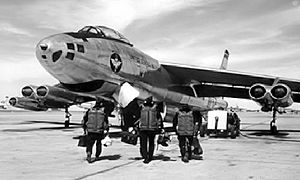
Wichita's population grew very fast during World War II. It became a major factory for Boeing B-29 bombers needed for the war. By 1945, Wichita was making about 4.2 bombers every day. For many years, Boeing was Wichita's largest employer. Wichita's population grew fastest during the Cold War. This was when Wichita was the main office for the Boeing Military Airplane Company and home to McConnell Air Force Base. Boeing made all Boeing B-47 Stratojet aircraft and 63% of the Boeing B-52 Stratofortresses in Wichita. McConnell Air Force Base hosted many important military units. Wichita's central location in the U.S. made it a good place for military planes, giving them more time to react to an attack.
Several aircraft from McConnell AFB crashed in the city:
- On March 28, 1956, a Boeing B-47 Stratojet crashed northeast of the city, killing three crew members.
- On January 16, 1965, a fuel-filled Boeing KC-135 Stratotanker crashed after an engine failed shortly after takeoff from McConnell. It caused a huge fire in north-central Wichita, killing 23 people on the ground and 7 crew members. This was the largest non-natural disaster in Kansas history. The crash site became Piatt Memorial Park, and a monument was put there in 2007.
- On March 5, 1974, another Boeing KC-135 Stratotanker carrying fuel crashed near the runway, killing two of its seven crew members.
In 1962, the Lear Jet Corporation was started in Wichita. On February 7, 1963, they began building the first Learjet aircraft. The next year, the company was renamed Lear Jet Corporation. In 1990, a Canadian company, Bombardier Aerospace, bought Learjet.
In the 1970s, airplane designer Jim Bede came back to the Wichita area. He worked on developing the Bede BD-5 micro-kitplane. Bede's chief engineer was Burt Rutan, who, with his brother Dick Rutan, helped create the world's first government-certified all-composite airplane, the Beech Starship.
In the late 1980s, two Boeing 747 planes were changed at Boeing-Wichita to become VC-25s, which serve as Air Force One.
In August 1997, Boeing joined with McDonnell Douglas. Boeing moved its military aircraft division headquarters. In the 1990s, Boeing sold most of its commercial aircraft factory to a new company called Spirit AeroSystems. Spirit AeroSystems continued making major parts for all Boeing jetliners, including the front part of all Boeing jets and 75% of the Boeing 737 fuselage.
In the early 2000s, Wichita's aircraft manufacturing went back to its roots with a small company called Belite Aircraft Corp.
In 2012, Boeing announced it would close its remaining Wichita facilities. However, Wichita is still a major center for the aircraft industry today. Textron (Cessna, Beechcraft, and Textron Aviation) and Bombardier have large factories in town. Airbus also has design and engineering facilities here.
Entrepreneurial Hub
Wichita was also an important center for starting new businesses before and after World War II. Companies like Coleman, Mentholatum, Pizza Hut, Freddy's Frozen Custard & Steakburgers, White Castle, Taco Tico, and Koch Industries all started in Wichita. (Interestingly, White Castle closed all its Wichita restaurants in 1938.) Wichita's spirit of starting new businesses led to the creation of one of the first university centers to study and support entrepreneurship at the Wichita State University Center for Entrepreneurship.
In October 1932, orchestra leader Gage Brewer showed the world the electric guitar from Wichita. He used an instrument made by what would later be known as the Rickenbacker Guitar Company.
The Dockum Drug Store sit-in was one of the first organized protests to end segregation in the United States. Segregation meant that black people and white people were kept separate in public places. This protest began in July 1958 in Wichita at the Dockum Drug Store. Protesters would sit at the lunch counter all day until the store closed, even when people made fun of them. The sit-in ended three weeks later when the owner agreed to serve black customers. This happened 18 months before the more famous Greensboro sit-ins in 1960. A 20-foot-long bronze sculpture now marks the site of this successful protest, showing a lunch counter and people taking part in the sit-in.
Recently, downtown Wichita and its east and west sides have seen more development. In June 2005, voters approved a sales tax increase to build a new arena downtown. This new arena replaced the older Kansas Coliseum and is seen by some as a way to bring new growth to downtown.
Images for kids


